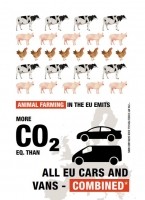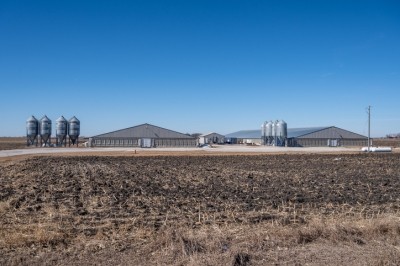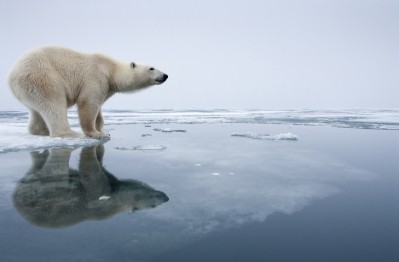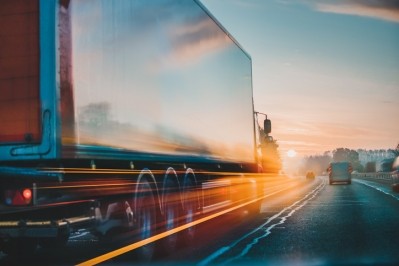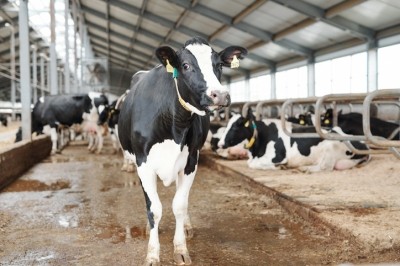Academic rails against 'flawed' analogy comparing EU livestock emissions to that of cars and vans

Dr Frank Mitloehner, a professor and air quality extension specialist at the University of California, Davis, in a rant on the social media site, said an article in the Guardian, based on a new report by Greenpeace, Farming for Failure, claims EU livestock are producing more GHG emissions than all cars and vans within the union.
“Not only is this an apples-to-oranges comparison, but it unfairly and deliberately omits key data to skew favor one way while vilifying the other,” said the academic.
Mitloehner says Greenpeace, by their own account, is a non-profit NGO rooted in activism, and that activism has a necessary place in society, but, when it comes to the issue of climate change, science and emissions expertise must prevail.
“Life cycle assessment (LCA) is a key point to understanding why there continues to be so much confusion around cars and cows. LCA refers to the environmental impacts of a product when considering all stages of the product. So, in other words, direct and indirect emissions.
“With livestock this means – land use, on-farm activities, processing, transportation, packaging, etc., – everything. Here’s where the problem lies with the Greenpeace claims: The group used LCA for livestock but did not use the same method to calculate emissions for cars.
“Greenpeace only used direct emissions for cars, or tailpipe emissions. This completely omits the indirect impacts of individual vehicles such as the building of roads, production of metal, use of gas, etc. Not only did Greenpeace fail to use the same methodology to compare the two sectors, but the way the numbers were crunched did not account for the mitigation and sustainability practices applied by European animal farmers since 2004, the year from which the data used by Greenpeace was sourced,” he wrote.
He said it is important to call out the inaccuracies because it will do more harm than good in work underway to limit global climate change.
Greenpeace: LCA comparison between sectors not goal
Responding on Twitter, Greenpeace said a comparison between the life-cycle assessments of different sectors was not the objective of its report.
“It is an analysis of the scale of the life-cycle emissions of animal farming and it illustrates this in a number of ways.
“It is always good to read the report carefully to avoid getting wrong impressions.
“We're clear about the difference in direct/indirect emissions, and the comparison to cars/vans ‘on the road’ is just one way to show the magnitude.”
Reacting to those comments from Greenpeace, Mitloehner told FeedNavigator.
“They didn’t really answer any of the points I made. They continue to justify comparing two different sectors with different parameters, which is simply wrong. How can you properly show scale — which is what they are claiming to be doing — if you use different standards? To equate [GHG emissions from] livestock to fossil fuel related industries is a gross misunderstanding of science and the challenges we face to keep global warming from exceeding 1.5 degrees Celsius.”
Greenpeace calculations of emissions from EU livestock farming
Source: Farming for Failure, Greenpeace, September 2020
“Using a full life-cycle approach tailored to European production, Weiss and Leip 2012 calculated that animal farming in Europe as of 2004 contributed 623–852m tons of CO2 equivalent (CO2eq) per year. Replicating and updating that approach, Bellarby et al. 2013 calculated that European animal farming in 2007 was responsible for yearly emissions of 630–863 million tons CO2eq, which corresponds to 12–17% of the EU-27’s total greenhouse gas emissions in 2007.
“Recent greenhouse gas accounting has confirmed that the emissions factors used in these studies are still reliable for emissions calculations today. This report updates the approach used by these studies, using 2018 FAO production data to show current annual greenhouse gas emissions from animal farming in the EU-28.
“In the results of this report, direct emissions are defined as those including agriculture sector emissions linked to animal production (methane from enteric fermentation of ruminants and manure and nitrous oxide from nitrogen applied to soils) plus energy and industry sector emissions associated to animal production up to the farm gate, and indirect emissions are defined as those associated to land use and land use change linked to animal production up to the farm gate (LULUC).”
Flawed comparison
Anne Mottet and Henning Steinfeld from the Food and Agriculture Organization (FAO) of the UN, writing here, argue that GHG emissions from livestock and transport are often compared, but in a flawed way, measuring direct emissions from transport against both direct and indirect emissions from livestock.
“The Intergovernmental Panel on Climate Change (IPCC) identifies and monitors human activities responsible for climate change and reports direct emissions by sectors. The IPCC estimates that direct emissions from transport (road, air, rail and maritime) account for 6.9 gigatons per year, about 14% of all emissions from human activities. These emissions mainly consist of carbon dioxide and nitrous oxide from fuel combustion. By comparison, direct emissions from livestock account for 2.3 gigatons of CO2 equivalent, or 5% of the total. They consist of methane and nitrous oxide from rumen digestion and manure management. Contrary to transport, agriculture is based on a large variety of natural processes that emit (or leak) methane, nitrous oxide and carbon dioxide from multiple sources. While it is possible to “de-carbonize” transport, emissions from land use and agriculture are much more difficult to measure and control.”
Though it is the most systematic and comprehensive method for assessing environmental impacts according to the IPCC, there is no life cycle approach estimate available for the transport sector at a global level to those authors’ knowledge. Non-availability, uncertainty or variability of data limit its application, they said.
Greenpeace has not responded to our request for comment.
